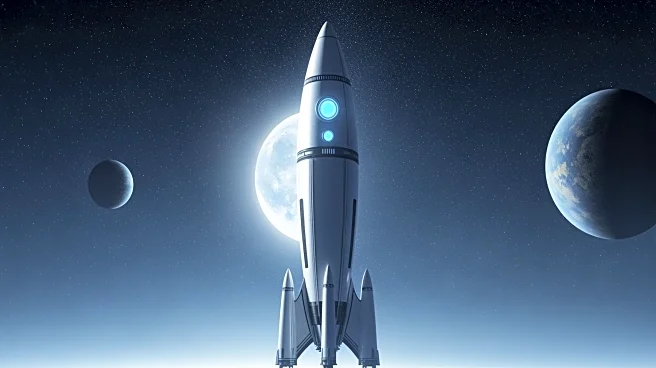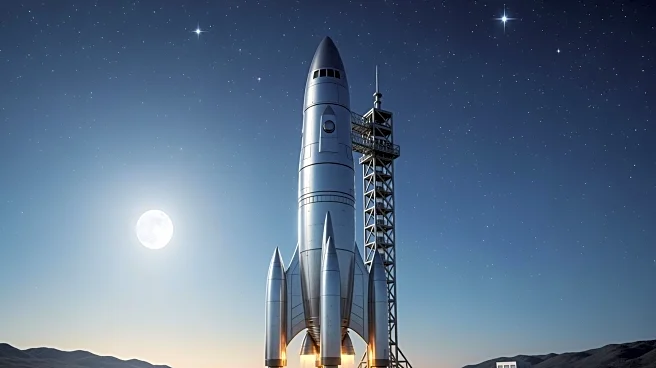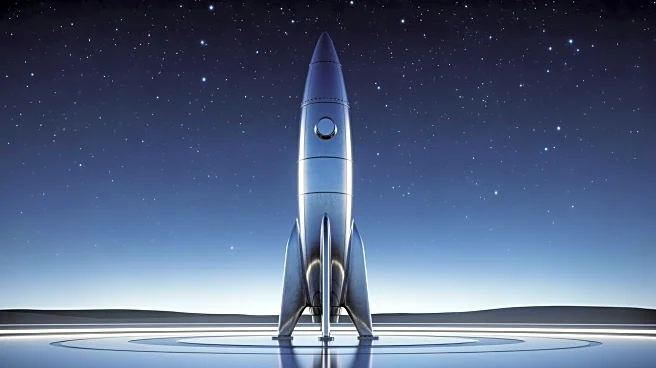What's Happening?
SpaceX is preparing to launch the third version of its Starship rocket, known as Starship V3, in 2026. This upgraded version will be larger, featuring more efficient Raptor engines and capable of carrying
more propellant. The new design includes docking adapters for in-orbit fuel transfer, which is crucial for missions beyond low Earth orbit. The previous version, Starship V2, completed its final suborbital test flight successfully, paving the way for the new iteration. SpaceX aims to use Starship V3 for orbital flights, operational payload missions, and potentially missions to the Moon and Mars. The company is actively building multiple vehicles and preparing them for tests, focusing on achieving a fully reusable vehicle for various space missions.
Why It's Important?
The development of Starship V3 is significant for the future of space exploration, particularly for missions to the Moon and Mars. By enhancing the rocket's capabilities, SpaceX is positioning itself as a leader in the private space industry, potentially reducing costs and increasing the frequency of space missions. The ability to transfer propellant in orbit is a critical advancement, enabling longer-duration missions and expanding the possibilities for interplanetary travel. This progress could have substantial implications for NASA and other space agencies, as reliance on private companies like SpaceX may alter the dynamics of space exploration funding and collaboration.
What's Next?
SpaceX plans to conduct orbital tests of Starship V3 starting in 2026, with the goal of demonstrating its capabilities for propellant transfer and operational payload missions. The company is also considering sending an uncrewed Starship to Mars during an upcoming launch window. However, the radical redesign of the rocket may present initial challenges, and it remains to be seen how quickly SpaceX can overcome these to achieve successful orbital flights. Stakeholders in the space industry, including NASA, will be closely monitoring these developments as they could influence future collaborations and mission planning.
Beyond the Headlines
The advancements in Starship V3 highlight the growing role of private companies in space exploration, raising questions about the balance between public and private sector involvement. As SpaceX continues to innovate, ethical considerations regarding space travel, such as environmental impacts and the commercialization of space, may become more prominent. Additionally, the success of Starship V3 could accelerate the timeline for human missions to Mars, potentially reshaping humanity's understanding of space colonization and its implications for society.











